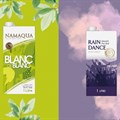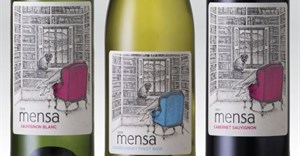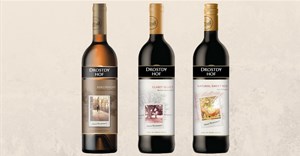
Subscribe & Follow
Advertise your job vacancies
Jobs
- New Business Developer - Food Packaging Johannesburg
- Key Account Manager Johannesburg
- Business Development Manager Johannesburg
Wine in cartons gain popularity
Packaging for wine has evolved a great deal in recent years. There was a time when wine poured from a glass bottle sealed under cork was the only acceptable form of packaging for consumers.

Image supplied
Times have changed, and so have consumer perceptions and lifestyles. As a result, there are more packaging choices than ever. From glass bottles sealed with roll-on pilfer-proof (ROPP) screw tops to bag-in-a-box, liquid cartons and even cans. The humble glass bottle and cork are no longer the default packaging choices for winemakers.
“Consumers are happily buying wine under screw caps,” says Riekie de Jager, national wine buyer at Ultra Liquors.
“The risk of having a cork tainted wine is 0% and it has now been long enough to know that the quality of the wine and its age ability are not impacted by a screw cap.”
As for bag-in-a-box, De Jager notes how the quality of wine that was traditionally packaged in boxes has improved, and consumers can now purchase a great wine at an affordable price.
“Ten years ago, the leftovers of the harvest would be put in box and an inferior product would be sold. These days, you can buy very decent wine in a bag-in-box format. Single cultivars are used and not just a blend of leftovers.”
More acceptable
De Jager went on to say that boxed and carton wine have become increasingly acceptable among consumers thanks to partnerships between retailers and well-known wine brands.
Woolworths, for example, has collaborated with Beyerskloof, Diemersdal and Kleine Zalze to package some of their wines in the 2L slimline bag-in-a-box.
“It is this type of retailer-winemaker partnership that not only provides consumers with a better deal on their favourite labels, but also makes it more acceptable to buy bag-in-a-box wine,” says De Jager.
“And yet in Scandinavian countries, buying wine in a box or carton has never been frowned upon and is something they’re happy to buy and serve at home.”
Wine and its packaging continue to evolve, with liquid cartons gaining momentum as a sought-after packaging solution for wine manufacturers.
Growth of wine in cartons
In fact, according to NielsonIQ’s data, in South Africa, the volume of wine in cartons in the formal market increased by 50,7% from 2022 to 2023, and 55,7% in value over the same time period. This double digit growth has continued into 2024.
“Over the past three years, there has been a steady evolution of growth within the segment. We are still seeing double digit growth within the category which shows a potential shift from traditional wine bottles to cartons,” says Riccardo Pizzi, Senior Manager at NielsenIQ.
“In the short term, wine produced in 750ml glass is only growing in value at 5% – that is not even covering inflation. Yet we are growing box wine way ahead of that. In the market that Ultra Liquor serves, bag-in-box is growing at over 40%,” says De Jager.
So what makes liquid cartons an enticing choice for manufacturers to include in their wine range?
Robust, cost-efficient alternative
Liquid cartons provide beverage manufacturers with a lightweight, resilient packaging alternative that saves both on transport costs, space and carbon emissions. In their flat sleeve state, up to 740,000 1L cartons can be delivered to a wine manufacturer on a single truck in one trip.
This substantially reduces the number of deliveries needed compared to other pack formats. On arrival, flat cartons can be stored efficiently until they are needed for production.
Manufacturers can therefore store more packaging on site without having to give up too much space.
After the cartons are filled, they can be stacked safely and easily into a delivery van. The robust design reduces the likelihood of breakage during transport – an important feature for Steven Roux, marketing director of Boland Wine.
“All manufacturers are concerned about whether or not their product arrives at its destination in the same condition as it left,” says Roux. “We found that cartons were much easier to transport without breakages and helped to reduce our overall packaging costs.”
On top of providing Boland with a resilient packaging solution, cartons also help to maintain the quality and flavour of the wine from winemaker to consumer with no chance of taste taint. The multi-layered characteristics of liquid cartons prevents UV exposure and oxidation – important considerations when it comes to packaging a beverage like wine.
Unopened, liquid cartons will preserve a wine’s quality for six to eight months comfortably and even longer depending on which wine it is.
Changing consumer demand and perceptions
While it might seem like wine consumers are a tough market to convince to drink wine out of anything besides a glass bottle, the market has become more open to trying out new packaging options.
De Jager believes consumers still prefer to take a bottle of wine to a dinner party for example, but for those times during the week, consumers are happy to buy their favourite wines in a bag-in-a-box or cartons to enjoy after work.
Boland Wine first introduced cartons in 2004 and has seen the demand for their product steadily grow. Today, the winery offers its Cape Style product range in 1L Nampak cartons – a wine range that it describes as an “everyday enjoyment” wine to accompany any meal or social event like picnics or braais.
“We’ve found that our typical consumer for cartons falls within the living standards measure of two and seven. During times of economic constraint, we’ve seen more customers opt for our 1L carton over the standard 750ml bottle.”
In addition to providing consumers with cost savings, cartons are a convenient packaging solution. The design of the carton means it presents well on shelf and can easily stand upright in a shopping bag. The cap allows for an easy pour and can be replaced for consumers to continue drinking later.
Cartons also provide consumers with a sustainable packaging alternative as they are both renewable and recyclable. Virgin wood fibre is sourced from responsibly managed forests and used for paperboard, which can be repurposed into cardboard and boxes.
The polyethylene and aluminium layers are separated from the fibre and later recycled into useful materials for construction such as planks and roofing, as well as furniture like outdoor benches and desks.
“While cost and breakage were important considerations for us, our environmental impact when it came to our operations was a vital part of our decision to introduce cartons,” says Roux. “Consumers are becoming more eco-conscious, and we needed to ensure that we were answering these changing demands.”
Cartons may seem like an unusual packaging option for wine, but their design and features make them a worthwhile choice for wine makers and consumers alike. From wine barrel to a consumer’s picnic basket, family braai or evening in, cartons are an affordable and sustainable fit-for-purpose packaging choice that is gaining in popularity.













